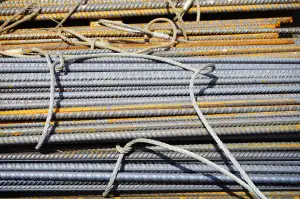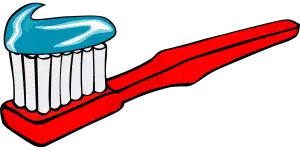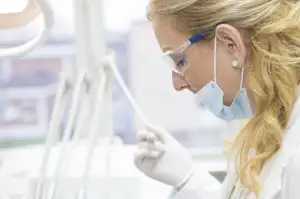Say Goodbye to Neck Warts: Effective Methods to Remove Them

- Understanding the causes and risk factors associated with neck warts
- Exploring various natural remedies for removing neck warts
- Tea tree oil: its antiviral properties and application method
- Apple cider vinegar: its acidic nature and effectiveness in wart removal
- Garlic: its antimicrobial properties and topical use for warts
- Over-the-counter treatments for neck warts
- Salicylic acid-based products: their mechanism of action and usage instructions
- Cryotherapy: freezing warts with liquid nitrogen
- Seeking professional medical assistance for neck wart removal
- Dermatologist's evaluation and treatment options
- Surgical procedures like excision or laser therapy
- Preventive measures to avoid neck warts recurrence
- Maintaining good hygiene practices
- Boosting the immune system through a healthy lifestyle
Neck warts, also known as filiform warts, are small growths that appear on the skin of the neck. They are caused by the human papillomavirus (HPV) and can have a significant impact on one's health and well-being. These warts are usually harmless but can be unsightly and cause discomfort or irritation. In some cases, they may even bleed or become infected if left untreated. It is important to address neck warts promptly to prevent complications and ensure optimal health.
Understanding the causes and risk factors associated with neck warts
Understanding the causes and risk factors associated with neck warts is crucial in preventing their occurrence. Neck warts, also known as filiform warts, are caused by the human papillomavirus (HPV) infection. HPV spreads through direct contact with an infected person or contaminated surfaces. Factors that increase the risk of developing neck warts include a weakened immune system, frequent shaving or cuts on the neck area, and close contact with individuals who have HPV. It is important to be aware of these risk factors and take necessary precautions to reduce the chances of developing neck warts.
Exploring various natural remedies for removing neck warts
Exploring various natural remedies for removing neck warts, there are a few options that have shown promise. Tea tree oil, known for its antiviral properties, can be applied directly to the wart using a cotton ball. Apple cider vinegar, with its acidic nature, can be dabbed onto the wart and covered with a bandage overnight. Garlic, known for its antimicrobial properties, can be crushed and applied topically to the wart. These remedies may take time and consistency to show results but are worth considering as non-invasive alternatives.
Tea tree oil: its antiviral properties and application method
Tea tree oil is a natural remedy known for its antiviral properties, making it an effective option for removing neck warts. This essential oil contains terpinen-4-ol, which has been shown to have antiviral activity against the human papillomavirus (HPV) that causes warts. To apply tea tree oil, dilute it with a carrier oil like coconut or olive oil to avoid skin irritation. Then, using a cotton swab, gently dab the diluted tea tree oil onto the wart and cover it with a bandage. Repeat this process daily until the wart disappears.
Apple cider vinegar: its acidic nature and effectiveness in wart removal
Apple cider vinegar is a popular natural remedy for removing neck warts due to its acidic nature. The acetic acid in apple cider vinegar helps to break down the tissue that forms the wart, eventually causing it to fall off. To use apple cider vinegar for wart removal, soak a cotton ball in the vinegar and apply it directly to the affected area. Secure it with a bandage and leave it on overnight. Repeat this process daily until the wart disappears. It's important to note that while apple cider vinegar has shown effectiveness in some cases, results may vary and it may take several weeks or even months for the wart to completely disappear.
Garlic: its antimicrobial properties and topical use for warts
Garlic is known for its potent antimicrobial properties, making it an effective natural remedy for treating neck warts. Its active compound, allicin, exhibits strong antiviral and antibacterial effects. To use garlic for wart removal, crush a clove to release the allicin and apply it directly to the affected area. Secure it with a bandage overnight and repeat daily until the wart disappears. However, it is essential to consult a healthcare professional before trying any home remedies to ensure proper diagnosis and treatment.
Over-the-counter treatments for neck warts
Over-the-counter treatments for neck warts offer convenient options for those seeking to remove them at home. Salicylic acid-based products are commonly used and work by gradually dissolving the wart tissue. It is important to follow the usage instructions carefully, applying the product directly to the wart and protecting the surrounding skin. Another option is cryotherapy, which involves freezing the wart with liquid nitrogen. This method destroys the wart by causing it to blister and fall off over time. However, it is advisable to consult a healthcare professional before attempting any over-the-counter treatments to ensure proper usage and minimize potential side effects.
Salicylic acid-based products: their mechanism of action and usage instructions
Salicylic acid-based products are commonly used for the removal of neck warts due to their effective mechanism of action. Salicylic acid works by softening the skin layers affected by the wart, allowing for easier removal. It also has keratolytic properties, meaning it helps to break down and dissolve the wart tissue.
To use salicylic acid-based products, start by cleaning the area around the wart with mild soap and water. Gently dry the area before applying a thin layer of the product directly onto the wart. Be careful to avoid applying it on healthy skin.
Cover the treated area with a bandage or tape to protect it from friction and external irritants. Leave the product on for several hours or overnight, as directed by the manufacturer's instructions.
Repeat this process daily until the wart is completely removed, which may take several weeks depending on its size and depth. It's important to be patient and consistent with application for optimal results.
If any discomfort or irritation occurs during treatment, discontinue use and consult a healthcare professional. Salicylic acid-based products should not be used on moles, birthmarks, or areas with open wounds.
Remember to always read and follow the instructions provided with the product for safe and effective usage.
Cryotherapy: freezing warts with liquid nitrogen
Cryotherapy is a popular over-the-counter treatment for neck warts. It involves freezing the wart using liquid nitrogen, which has a temperature of around -320 degrees Fahrenheit. The extreme cold temperature destroys the cells within the wart, leading to its removal. This procedure is usually performed by a healthcare professional and may cause some discomfort or pain during the freezing process. However, it is generally considered safe and effective in removing neck warts. It may require multiple sessions for complete eradication of the wart, and there might be some temporary skin discoloration or blistering after the treatment.
Seeking professional medical assistance for neck wart removal
Seeking professional medical assistance for neck wart removal is recommended in certain cases. A dermatologist can evaluate the warts and recommend appropriate treatment options. They may suggest topical medications, such as prescription-strength creams or ointments, that can effectively remove the warts. In some cases, surgical procedures like excision or laser therapy may be necessary to completely eliminate the warts. It is important to consult a healthcare professional for proper diagnosis and treatment, especially if the warts are large, painful, or recurring.
Dermatologist's evaluation and treatment options
When it comes to neck warts, seeking professional medical assistance is crucial for proper evaluation and treatment. Dermatologists are experts in diagnosing and managing skin conditions, including warts. They will examine the wart and determine the best course of action based on its size, location, and other factors. Treatment options may include topical medications like imiquimod or podophyllin resin, which stimulate the immune system to fight off the virus causing the wart. In some cases, dermatologists may recommend surgical procedures such as excision or laser therapy to remove the wart completely. Consulting a dermatologist ensures effective and safe removal of neck warts.
Surgical procedures like excision or laser therapy
Surgical procedures like excision or laser therapy are often recommended for the removal of neck warts. Excision involves cutting out the wart using a scalpel, while laser therapy uses a high-intensity beam of light to destroy the wart tissue. These procedures are typically performed under local anesthesia in a dermatologist's office. They are considered effective and safe methods for removing stubborn or recurring neck warts. However, it is important to note that these procedures may leave behind scars and require proper aftercare to promote healing. It is advisable to consult with a dermatologist to determine the most suitable surgical option for your specific case.
Preventive measures to avoid neck warts recurrence
Preventive measures play a crucial role in avoiding the recurrence of neck warts. Maintaining good hygiene practices is essential, including regular washing of the neck area with mild soap and water. Avoid sharing personal items like towels or razors to minimize the risk of spreading the virus. Additionally, boosting the immune system through a healthy lifestyle can help prevent warts from reappearing. This includes eating a balanced diet rich in vitamins and minerals, getting enough sleep, exercising regularly, and managing stress levels effectively. By adopting these preventive measures, individuals can reduce the chances of neck warts returning and enjoy a wart-free life.
Maintaining good hygiene practices
Maintaining good hygiene practices is essential in preventing the recurrence of neck warts. It is important to keep the affected area clean and dry at all times. Avoid touching or scratching the warts, as this can spread the virus to other parts of the body or to other individuals. Use separate towels, razors, and personal care items to prevent cross-contamination. Regularly wash your hands with soap and water, especially after touching or treating the warts. By practicing good hygiene, you can reduce the risk of developing new warts and promote faster healing of existing ones.
Boosting the immune system through a healthy lifestyle
Boosting the immune system is crucial in preventing the recurrence of neck warts. A healthy lifestyle plays a significant role in strengthening the immune system. Eating a balanced diet rich in fruits, vegetables, and whole grains provides essential vitamins and minerals that support immune function. Regular exercise helps improve circulation and enhances the body's ability to fight off infections. Sufficient sleep is also vital as it allows the body to repair and regenerate cells, including those involved in immune response. Additionally, avoiding smoking and excessive alcohol consumption can help maintain a robust immune system. By adopting these healthy habits, individuals can reduce their risk of developing neck warts and other viral infections.
In conclusion, early intervention and proper treatment for neck warts are crucial for maintaining good health. Ignoring or neglecting these warts can lead to discomfort, pain, and potential complications. It is important to understand the causes and risk factors associated with neck warts and explore natural remedies or over-the-counter treatments. Seeking professional medical assistance from a dermatologist may be necessary in severe cases. Additionally, practicing preventive measures such as maintaining good hygiene and boosting the immune system can help prevent recurrence. Remember, taking action promptly can ensure a happier and healthier life free from the burden of neck warts.
Published: 24. 02. 2024
Category: Health



